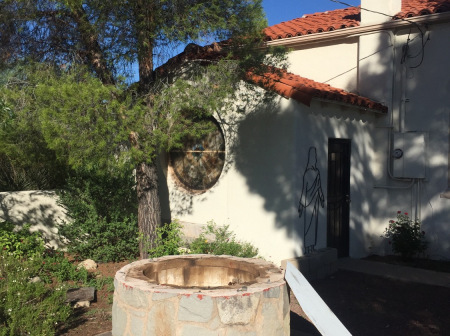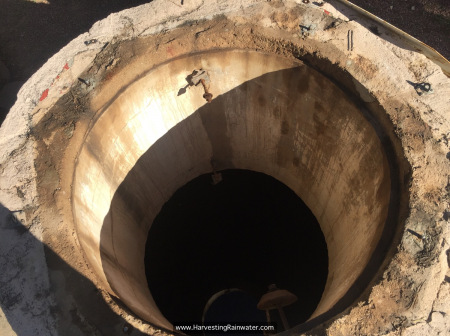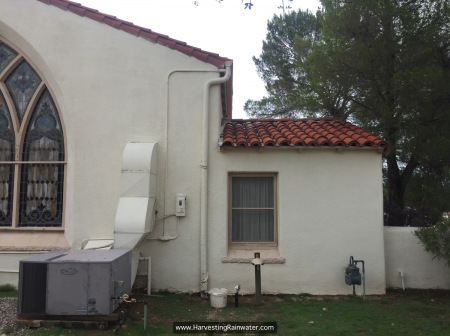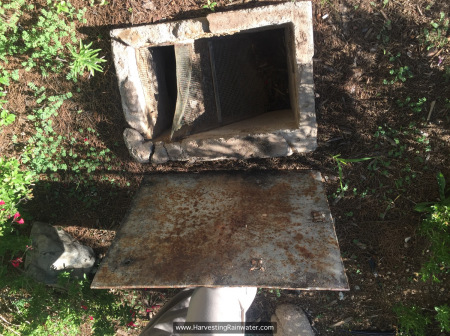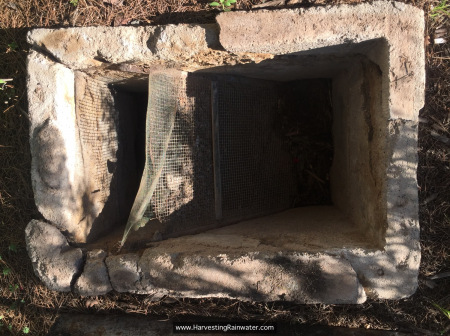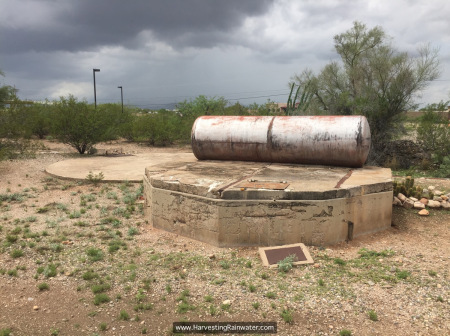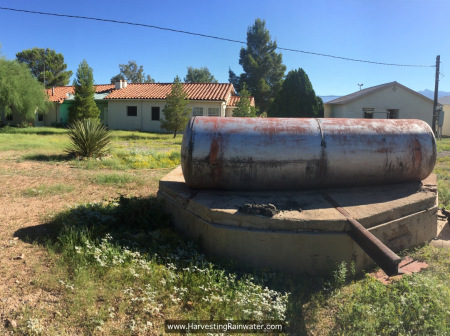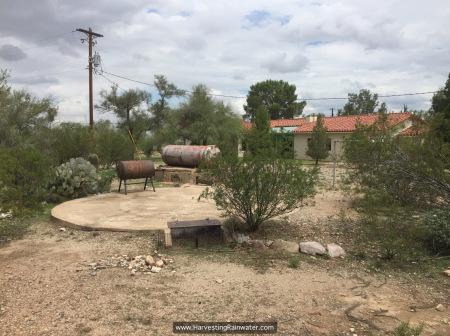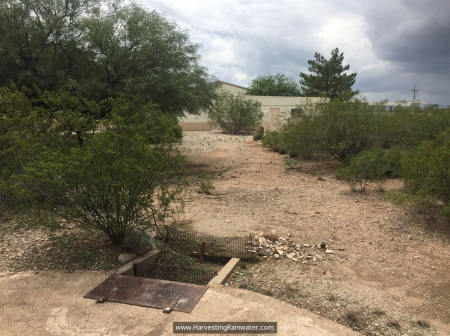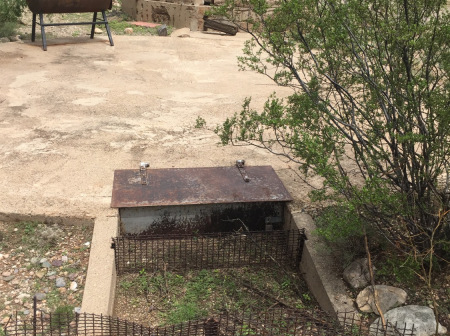Historic Rainwater-Harvesting Systems at the Shrine of Santa Rita in Vail, Arizona
by Brad Lancaster © 2017
www.HarvestingRainwater.com
Southern Arizona has a rich water-harvesting history that is too often forgotten or lost. Though sometimes gems are dusted off, unearthed, remembered, or even celebrated—and they can inspire and inform us in both the present and future.
One such example is this Saturday’s event at the old Vail, Arizona, post office and Shrine of Santa Rita.
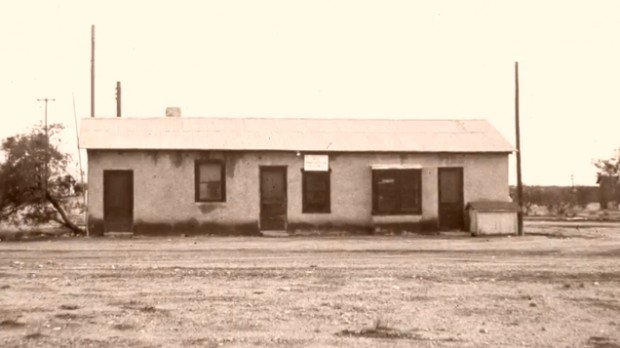
The old post office in Vail operated for decades without its own source of water. During that time it was dependent on the trains for bringing in water as, according to local historian J.J. Lamb, there was no well at the town site until 1992. The Santa Rita Shrine on the other side of the street, however, captured the rain falling on its roofs and landscape.
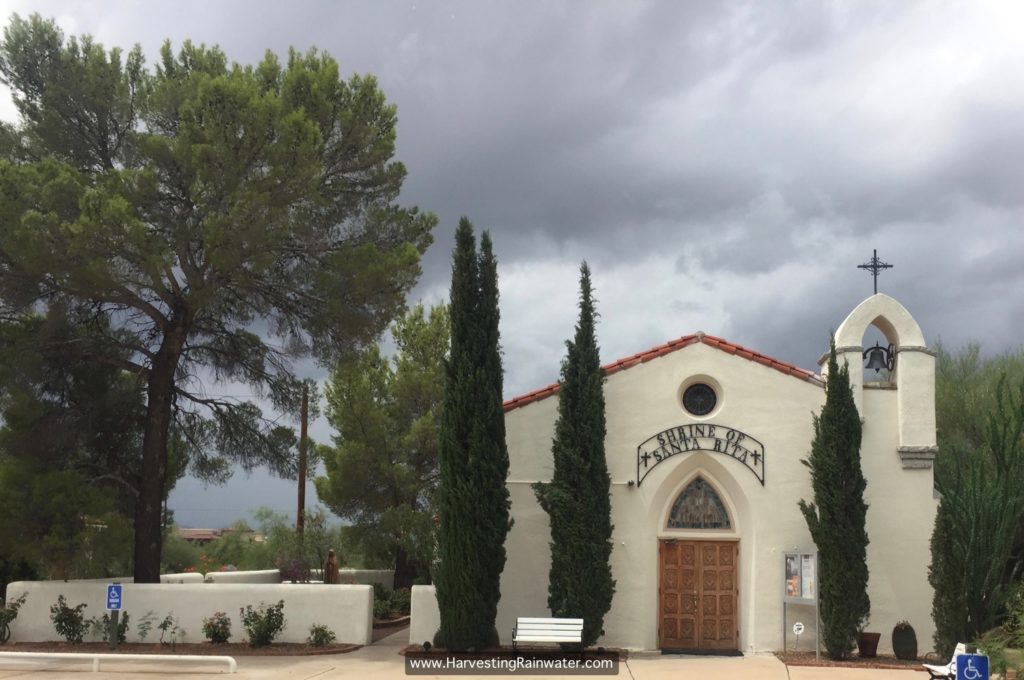
Built in 1934, the shrine captures rainfall from its terracotta tile roof and, via a gutter-and-downspout system and an underground pipe, directs that water to a 8-foot-diameter, 10-foot-deep, concrete-lined underground cistern on the east side of the shrine. Its storage capacity is approximately 3,700 gallons; it was half full when we inspected it. The top of the cistern has a 3-foot-high ring that used to be covered by an ornate roof designed to look like an old well from which water was accessed with a rope and bucket.
We could not find a separate overflow pipe when inspecting the system; it’s possible the overflow might be through the screen box.
Two other systems can be found southeast of the shrine. The shrine staff told us that the smaller, 12-foot-diameter cistern (11,380-gallon capacity) captures water from roofs, similar to the shrine’s roof-catchment system; it had ample water at the time of inspection (observed via a hole in the cistern’s roof). The second, larger 20-foot-diameter cistern (42,600-gallon capacity) captures runoff from the landscape.
Again, it seems both tanks’ overflow might be through their inlet screen boxes, as we could not find other overflow routes. (Though we’d likely have had better luck if we could have viewed the cisterns from the inside. The day of inspection the locks could not be unlocked. But the locks have since been replaced, so inspection is now possible with shrine staff.)
I love touring such old sites, and then figuring out how they worked—or in this case, still work. Seeing what did/does work well, and what may not, informs better practices in the present.
Unlike wells that extract groundwater, or pumps and canals that divert surface flow, these rainwater-harvesting systems do not deplete the flow of the nearby Cienega Creek Natural Preserve. Instead, they help enhance those flows by not extracting from our groundwater or creeks in the first place.
While I love these systems, there is a key piece missing: passive water-harvesting earthworks or rain gardens. There is huge potential for such passive systems capturing runoff from other roofs—such as the old Vail Post Office roof— as well as from streets, parking lots, sidewalks, footpaths, the overflow from cisterns, and even putting-green runoff. Each of these hardscape surfaces could direct its runoff water to adjoining mulched and vegetated basins or rain gardens that could then grow native, food-bearing trees to shade and cool the convex or hard surfaces from which they got their water. Water not used by the native plants will infiltrate below their root zone, helping recharge the groundwater.
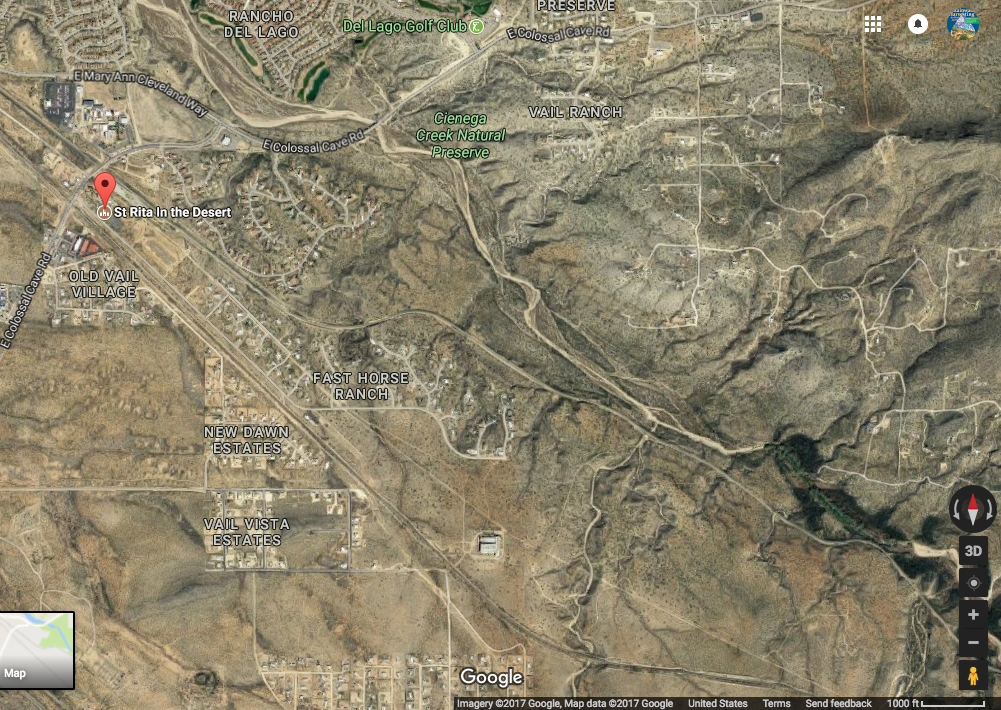
By planting, harvesting, or infiltrating the rainfall (rather than draining it) this site and many others could naturally and regeneratively grow more sustainable abundance—living oases irrigated with nothing more than the rain.
We’ll talk about how you can do this at the workshop this Saturday—come join us!
See the new, full-color, revised editions of Brad’s award-winning books
– available a deep discount, direct from Brad:

Volume 1


